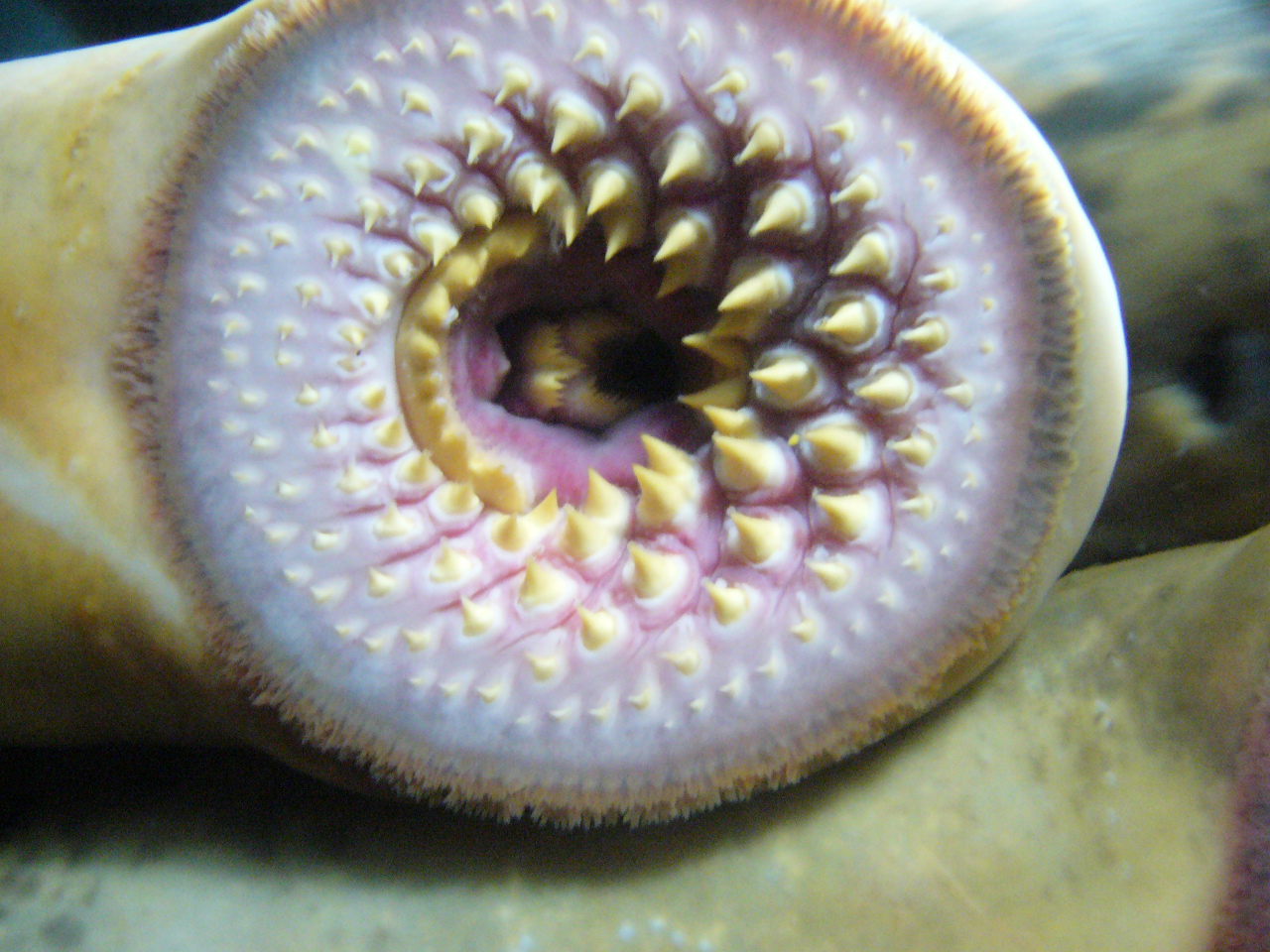
It has a mouth crammed full with concentric rings of hideous teeth, it latches onto prey animals and drinks their blood mercilessly (often draining them to death), and it’s living in a river, lake or sea near you. Meet the lamprey, one of Mother Nature’s nastier creations.
The lamprey has been around, unpretty much unchanged, since the time of the dinosaurs, and they’re thought to be the planet’s oldest vertebrates. Perfectly designed for the life it leads, the parasitic lamprey is so well tooled-up for attaching itself to unfortunate host animals that it even has teeth on its tongue, and the species has barely evolved at all in the last 360 million years.
That said, the last century has been tough in lamprey land, with manmade changes in river flow and levels of polution rising. However, the water quality in the UK has been vastly improved in the last decade, and provisions have been built into weirs and dams for migratory fish such as salmon and eels. According to reports the lamprey is making a comeback in Britain, haunting rivers like the Great Ouse, Trent, Derwent and Wear, and this month is the time they start mending their way up such waterways.

There are 18 species of lamprey, across three main divisions: brook, river and sea. The brook lamprey is a little fella, who leads a quiet life in small streams, and river lamprey are restricted to riverine environments. Sea lampreys, however, are the vampires of the world’s waterways, living in rivers, lakes and seas all around the western Atlantic, throughout Europe and North America, in the western Mediterranean and the Black Sea, and in Canada’s Great Lakes.
After starting life as a tadpole, once they mature into adults lampreys develop a truly terrifying mouth that bristles with teeth. Attaching themselves to prey fish, they then proceed to suck the life out of their hosts. Sea lamprey, which can reach 120cm in length, have even been found fastened to mighty basking sharks.
Lamprey are partly blamed for the decline in the trout population in the Great Lakes, and they are feared by many people around the world, although attacks on humans are extremely rare and usually only happen if the animal is severely starved. In fact, it’s much more common for people to prey on lamprey.
The fish are protected now, but until 1836 the City of Gloucester had to supply the royal table with a lamprey pie every Christmas. Lamprey feasts didn’t always end well, though. In 1135, Henry I apparently died of a ‘surfeit of lampreys’ (possibly food poisoning brought on by a dodgy dish of the ferocious fish).
Lamprey pies are still munched at special occasions, such as coronations. We don’t know whether the Queen tucked into one on her recent 90th birthday, but the last Gloucester pie (baked in 2012) had to be made from lamprey from North America, because of their protected status in the UK.
